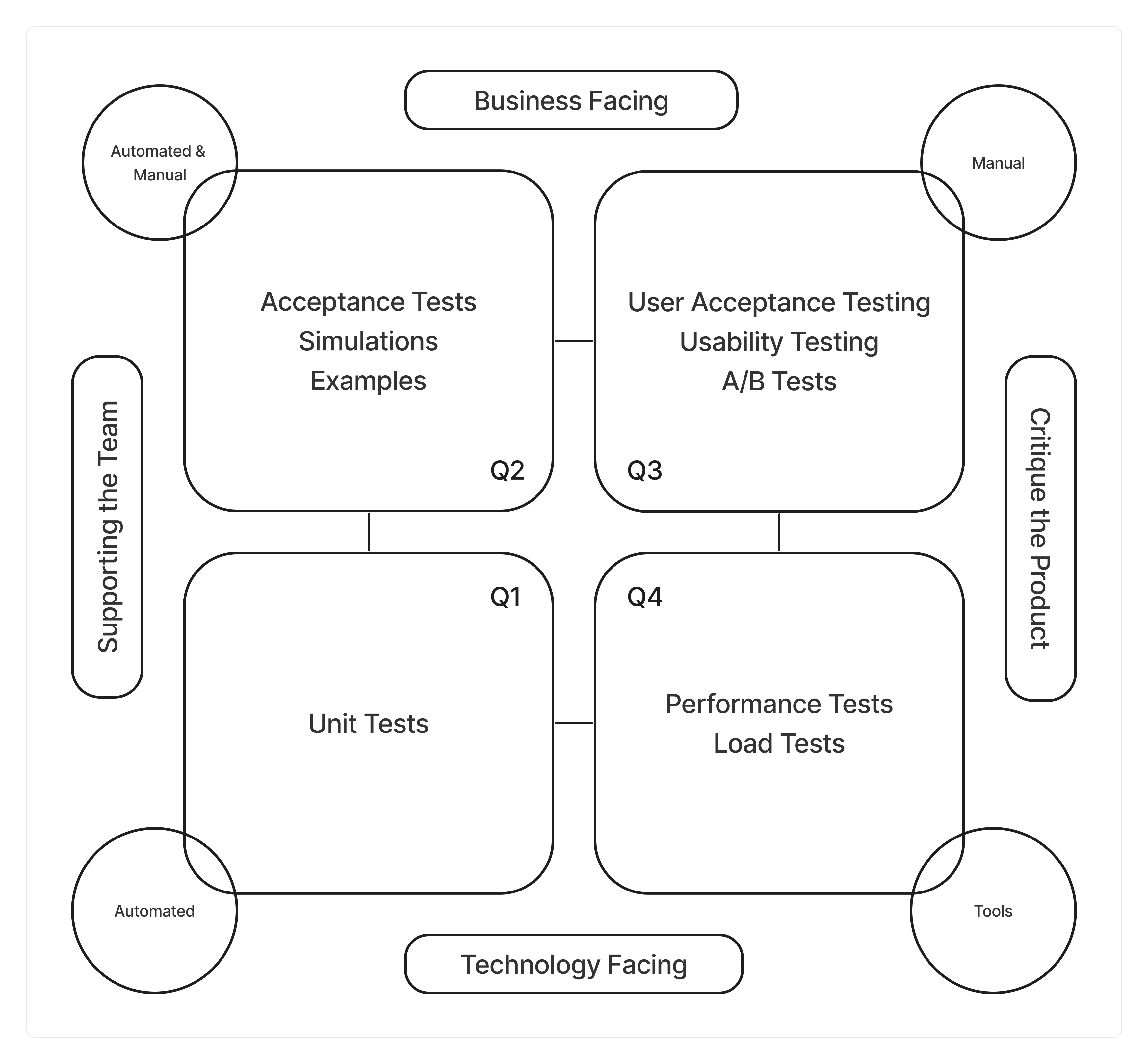Understanding Agile Testing Quadrants for Effective Software Testing
Learn about Agile Testing Quadrants and how they help in planning and executing different types of tests in software development.
To get confidence in the product, we need more than unit tests.
I was first exposed to Agile Testing Quadrants in “ATDD by Example: A Practical Guide to Acceptance Test-Driven Development” by Markus Gärtner. They are a visual representation of different types of tests used during software development. They are split into four quadrants, each serving a specific purpose and role in the software development process. These quadrants can help teams understand which tests to conduct and when to conduct them.

Q1
Quadrant I consists of tests that are focused on the technical aspects of the system. These tests ensure that the system functions as expected, adhering to the defined technical requirements. Common examples of tests in this quadrant include unit tests, component tests, and API tests. They are typically automated and run frequently during the development process.
Q2
Quadrant II comprises tests that validate the system’s functionality from a business perspective. These tests ensure that the software meets the intended business goals and requirements. Examples of tests in this quadrant include acceptance tests, user story tests, and user journey tests.
Q3
Quadrant III includes tests that verify the system’s compliance with regulatory and legal requirements. These tests are essential for industries with strict compliance regulations, such as healthcare or finance. They encompass tests like compliance testing, data privacy testing, and legal requirement testing.
Q4
Quadrant IV involves tests that ensure the software performs well in terms of scalability, performance, and security. Common tests in this quadrant include load testing, security testing, and stress testing. These tests are crucial for identifying performance bottlenecks and security vulnerabilities.
Benefits of the Agile Testing Quadrants
-
Clear Test Strategy: The quadrants provide a clear structure for the testing process, making it easier to plan and execute tests throughout the development cycle.
-
Effective Collaboration: The quadrants promote collaboration between developers and testers. Teams can work together to decide which tests are most relevant for each user story.
-
Risk Mitigation: By systematically covering all quadrants, teams reduce the risk of overlooking critical aspects of testing, such as business requirements, non-functional aspects, and compliance.
-
Adaptability: Agile Testing Quadrants are flexible and can be tailored to fit the specific needs of your project, making them compatible with a wide range of development methodologies.
Practical Implementation
To put the Agile Testing Quadrants into practice, start by identifying the relevant tests for each user story or feature. Determine whether the emphasis should be on technology-facing or business-facing tests, and consider non-functional and compliance tests as necessary. It’s crucial to find the right balance to ensure that the software is not only functional but also meets business and non-functional requirements.